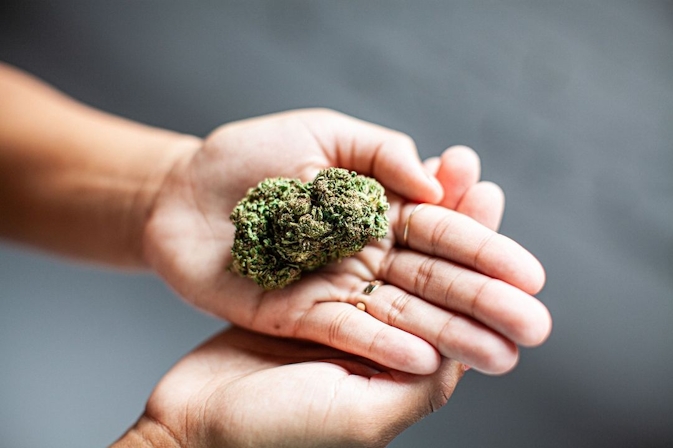
Photo courtesy of
Botany Farms
8 Health Benefits Of CBD
CBD is a cannabinoid predominantly extracted from the hemp plant. In this article you'll understand what the true difference between marijuana and hemp actually is, how CBD extracts are made, and what its benefits are. Created with Botany Farms.
It might be worth going through a re-cap before we get into the weeds of what CBD actually is. But I promise it will be a quick one.
CBD is nothing more than one of hundreds of components found the cannabis plant. These components are called cannabinoids and the list includes many others that you’ve probably also heard of, like; THC, CBG, CBC, and many more.
However:
CBD is predominantly extracted from the hemp plant and not from marijuana. This in turn stuffs our schoolbag with the burden of having to understand the true difference between marijuana and hemp.
Whether it’s hemp or marijuana, both can be consumed in pretty much the same ways. In fact, brands like Botany Farms even sell top-shelf CBD hemp flower, gummies, and tinctures to use as you wish.
Hemp vs. Marijuana
It’s a common misconception that marijuana and hemp are different species or strains of the cannabis plant, which is not entirely accurate. Marijuana and Hemp alike are just terms that society has grown accustomed to use when describing psychoactive and non-psychoactive products.
Marijuana is a term coined to describe varieties of the cannabis plant that contain more than 0.3% THC by each unit of dry weight. Because of its usually high THC content, marijuana induces psychoactive effects on the human body.

On the other hand:
Hemp is a variety of the cannabis plant that contains 0.3% or less THC. This is why companies have been able to use hemp material to produce products like thread and garments without the DEA knocking at their front door for so many years.

But this does not mean that CBD is not found in marijuana, because it is. It just means that it’s a lot more common and convenient for companies use hemp derived CBD extracts.
CBD vs. THC
As described above, THC and CBD are primarily recognized between each other because, well, bluntly speaking; one gets you high and the other one does not. But there are other differences between them, chemical differences to be precise.

We won’t go into these differences in detail, but we’ll aim to scratch the surface at least.
The way cannabinoids produce any effect on the body (whether psychoactive or non-psychoactive) is by interacting with your body’s endocannabinoid system. The endocannabinoid system spreads through your body in the form of receptors. Each one of these receptors is designed to fit a specific cannabinoid.
And it turns out that the receptors on the body designed to latch onto THC molecules affect the brain and body. On the contrary, receptors for CBD do not affect the brain, only the body. In consequence, THC gets you high and CBD does not.
Why CBD?

Photo courtesy of Botany Farms
Precisely because of its non-psychoactive nature, CBD has grown extremely popular over the past 10 years. Cannabis enthusiasts and stoners alike have recognized that feeling high is far from the only benefit of consuming cannabis.
Upon this realization the search began for a way to treat pains, aches, anxiety, depression, and all the symptoms that marijuana has proved to help with really. But without the psychoactive effects of THC. Enter CBD.
The obstacle then became; how to extract CBD and how can we make sure THC levels are kept to a minimum?
With the use of presses, heat, and solvents, companies have found a way to extract a long list of different cannabinoids. This is why oils, edibles, tinctures, capsules, and other extracts featuring a single cannabinoid have become so popular over the past decade.
With such technology advances the industry has been able to provide CBD in its purest form and we as consumers have been able to enjoy its benefits.
Health Benefits Of CBD
Recent scientific publications have found “preclinical and clinical evidence documenting value for CBD in some neuropsychiatric disorders, including epilepsy, anxiety, and schizophrenia”.
Other studies have shown promise in the treatment of refractory epilepsy in children with Dravet syndrome. Not only that, but because CBD is a component of cannabis sativa varieties which have been used to treat disorders including gout, rheumatism, malaria, pain, and fever, it is also believed that CBD could help with said disorders as well.
Some clinical evidence also suggests its efficacy in HIV-associated neuropathic pain and multiple sclerosis spasms.

However promising, it’s noteworthy to point out two things; Very few clinical studies on CBD have been done that actually provide conclusive evidence of psychiatric benefits and before using CBD to treat any ailments you should first consult a licensed physician that knows your particular situation and understands your medical case.
Regardless, we can say that empirical and observational evidence from users shows that CBD is a powerful substance that could potentially help with the following items:
- Pain Relief
- Reducing Anxiety
- Reducing Depression
- Combating Seizures
- Reducing Acne
- Neuro-Protective Properties
- Substance Abuse Treatment
- Potential treatment of other serious ailments
Conclusion
It’s hard to say exactly what CBD can and cannot help with from a medical point of view without solid conclusive evidence to back it up. However, clinical trials are under way and conclusive evidence is expected sooner rather than later.
All we can do for the time being is benchmark off of real-life user’s experiences with CBD and experiment with extracts ourselves to see what works best for your body.
Herb Recommended Products:
READ MORE










